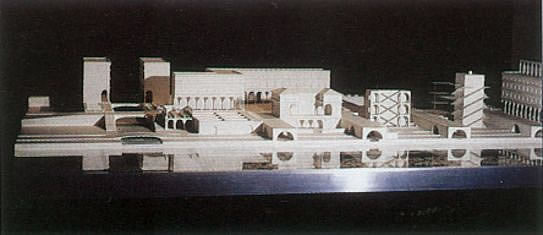

While Leonardo was living in Milan, much of Italy and the rest of Europe was struck by the plague and many people died. Leonardo felt the high number of deaths was partially due to the state of cities - they were very dirty and germs spread rapidly through the dense population. Garbage was thrown out onto the streets, there was poor sanitation and the streets were narrow and dark.
Leonardo designed an "ideal city" where the streets were wide, underground waterways carried garbage away and there was even a paddlewheel system that would clean the streets. His city was based on 2 levels, the top level was for the foot traffic and the bottom for carts and animals. In this city Leonardo hoped that improved living conditions would help to avoid contagious diseases from spreading so quickly and wiping out large percentages of the population. While the ideal city was never built, he did help to improve the Sforza castle by designing a smaller version of his plumbing and drainage system which proved to be both clean and efficient.
Students will look at Leonardo's sketches and reasons behind the design of the ideal city. They will then examine issues, needs and wants of cities today before designing their own contemporary version of the ideal city. As a class we will construct a small scale model of a city which will be governed by an elected body. Students will learn about scale, area, perimeter, volume, data analysis, chance uncertainty in mathematics at the same time exploring issue linked to local government as described in the Social Studies curriculum.